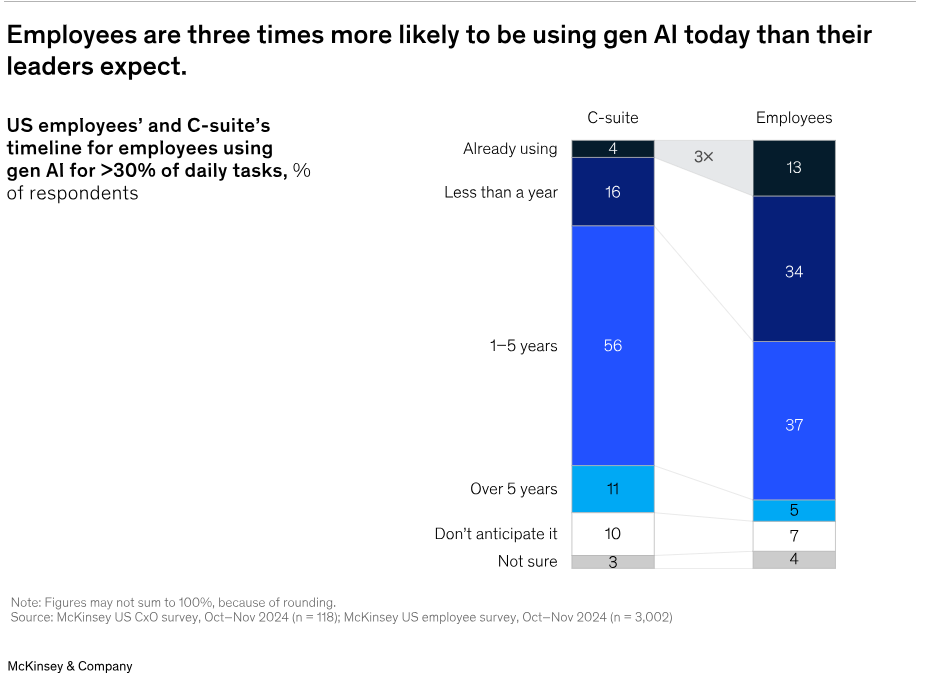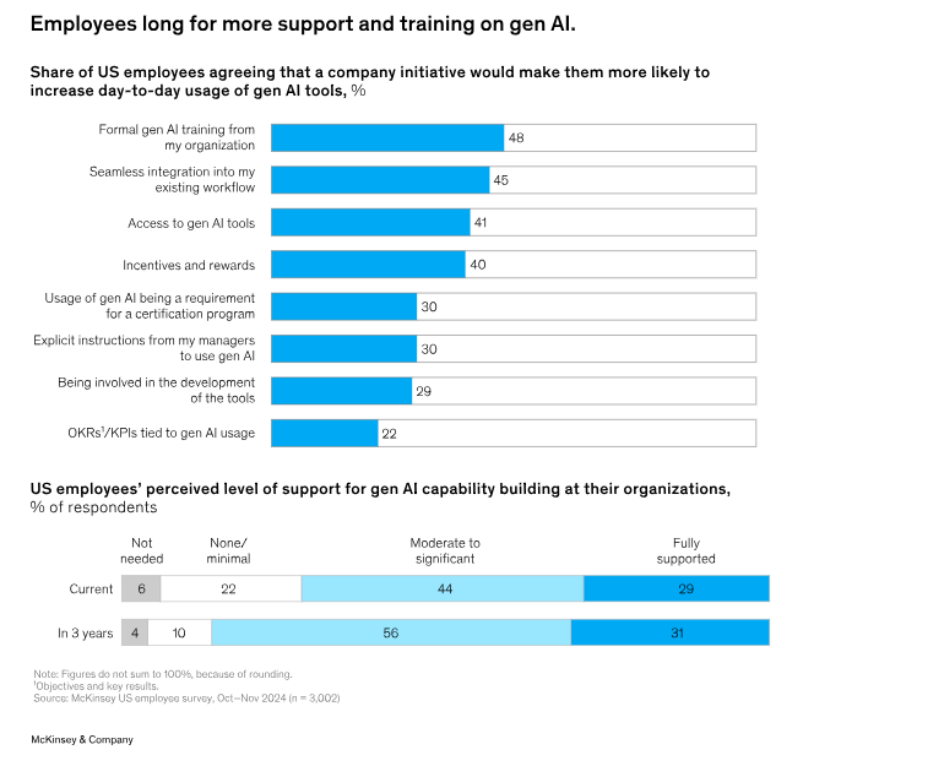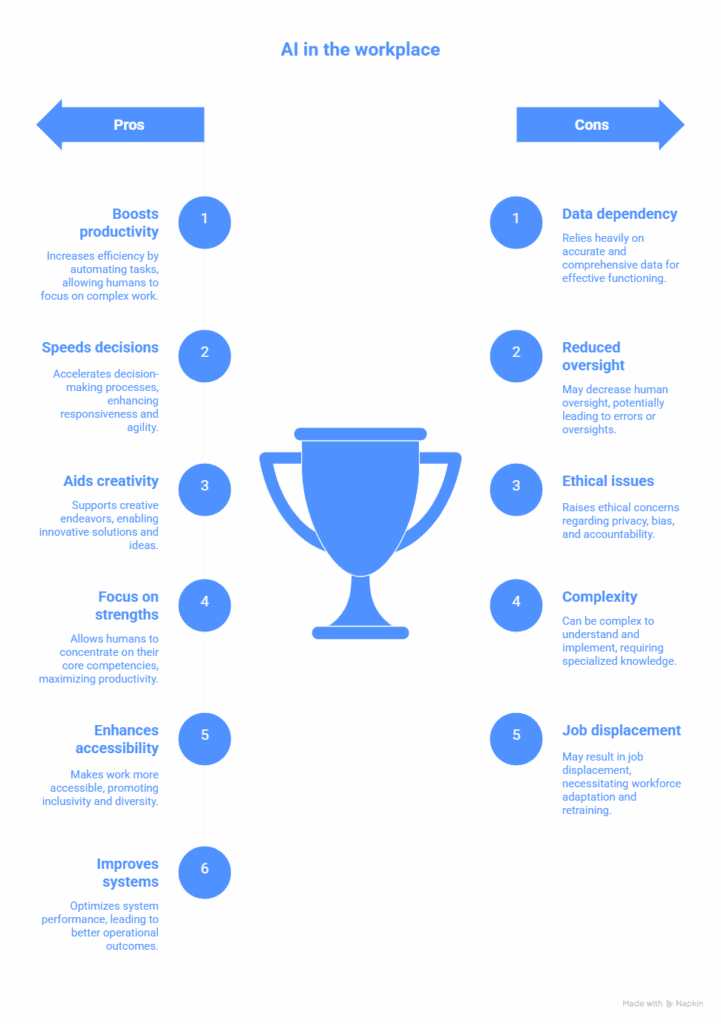Accelerate IT operations with AI-driven Automation
Automation in IT operations enable agility, resilience, and operational excellence, paving the way for organizations to adapt swiftly to changing environments, deliver superior services, and achieve sustainable success in today's dynamic digital landscape.
Driving Innovation with Next-gen Application Management
Next-generation application management fueled by AIOps is revolutionizing how organizations monitor performance, modernize applications, and manage the entire application lifecycle.
AI-powered Analytics: Transforming Data into Actionable Insights
AIOps and analytics foster a culture of continuous improvement by providing organizations with actionable intelligence to optimize workflows, enhance service quality, and align IT operations with business goals.
Why Workforce Empowerment Is the New Competitive Moat
In a marketplace where products and technologies can be copied in months, the real differentiator isn’t the tool you deploy but the people who know how to use it to its full potential. Workforce empowerment – giving employees the skills, data access, autonomy, and AI augmentation they need is fast becoming the competitive moat that no rival can easily cross.
The link between employee empowerment and enterprise agility is clear. Empowered employees are more likely to identify opportunities early, act decisively, and respond to market shifts before competitors even notice them. This is not just theory.
For instance, Tesla – by empowering engineers and operations teams with AI-driven design, predictive analytics, and supply chain optimization tools Tesla drastically reduces time from concept to production. This means quicker innovation cycles and a faster response to consumer demand, even in the face of industry disruptions.
The numbers back it up. According to Accenture, AI-augmented workforces can boost labor productivity by up to 40%. That translates into faster delivery, higher-quality products, and better customer satisfaction – all driven by empowered teams.
Empowerment creates momentum: employees feel capable, motivated, and valued. This morale fuels further innovation, making the organization’s advantage compounding and difficult to imitate.
AI as a Force Multiplier for Enterprise Performance
Enterprises achieve their best results when their people focus on high-value work – problem-solving, customer engagement, innovation – instead of repetitive administrative tasks. This is where AI transforms from a buzzword into a true force multiplier.
1. Frees Talent for Higher-Value Work
- AI automates repetitive, low-complexity tasks such as data entry, routine monitoring, and basic report generation.
- Employees can redirect their time to strategic planning, customer engagement, innovation, and problem-solving – areas where human judgment creates maximum business value.
2. Transforms Industry Workflows
- Banking & Financial Services: AI streamlines compliance processes (e.g., KYC verification, transaction monitoring, and anti-money laundering checks), scanning vast datasets in seconds and flagging anomalies. Compliance teams focus on complex investigations rather than manual reviews.
- Retail: AI enables real-time personalization by analyzing customer behavior and contextual data, reducing cart abandonment, boosting upsell rates, and enhancing loyalty.
3. Delivers Faster Decision Cycles
- According to McKinsey, organizations embedding AI into workflows achieve decision-making 3–5 times faster than peers.
- This agility enables rapid product launches, quicker responses to crises, and timely market pivots.
4. Raises the Ceiling of Enterprise Capability
- AI augments human expertise with precision and scale, allowing businesses to achieve outcomes that would be impossible with people or machines alone.
- This includes launching entirely new service models, expanding into untapped markets, and delivering highly personalized customer experiences at scale.
5. Strengthens Competitive Edge
- Faster workflows, deeper insights, and improved productivity create a compounding competitive advantage that is difficult for rivals to replicate quickly.
When technology takes on the repetitive, time-consuming work, the workforce is free to do what humans do best – build relationships, think strategically, and innovate. This synergy between people and AI creates outcomes that neither could achieve alone.
Closing the AI Skills Gap at Scale
No matter how powerful the AI tools are, they are useless without skilled people who know how to apply them. According to the World Economic Forum, 70% of executives see the lack of AI skills as the top barrier to adoption (WEF Future of Jobs Report).
The solution isn’t simply hiring more data scientists – it’s raising the AI literacy of the entire workforce. Leading strategies include:
- In-house AI academies – Structured programs that train employees in AI fundamentals, applications, and ethics tailored to different functions.
- Cross-functional AI squads – Agile teams combining domain experts, engineers, and data scientists to solve real problems and transfer skills across departments.
- Gamified learning platforms – Interactive, scenario-based learning that makes AI concepts engaging and directly applicable to daily work.
The ROI is compelling. Gallup estimates replacing an experienced employee can cost 1.5–2x their annual salary, while reskilling can deliver payback within months through higher productivity and retention. Organizations that invest in large-scale AI training avoid talent attrition, reduce recruitment costs, and increase internal mobility – ensuring they have the skills needed to compete in an AI-first market.
Without closing the skills gap, AI investments risk becoming expensive, underutilized experiments rather than strategic growth engines.
Becoming AI-Ready: The Workforce Imperative
An AI-ready workforce isn’t just one that knows how to operate new tools — it’s one that can adapt, learn, and innovate alongside AI as it continues to evolve. With the World Economic Forum projecting that 97 million new roles will emerge by 2025 as humans, machines, and algorithms collaborate (Future of Jobs Report), readiness has shifted from a future goal to a present-day competitive necessity.
Key traits of an AI-ready workforce:
- AI Literacy – Understanding AI’s capabilities, limitations, and real-world applications.
- Data-Driven Thinking – Confidence in interpreting AI-generated insights to make informed business decisions.
- Cross-Functional Collaboration – Ability to work across departments where AI is reshaping workflows and value chains.
- Adaptability – Comfort in pivoting strategies and skillsets as AI technologies rapidly evolve.
- Ethical & Responsible Use – Awareness of bias, transparency, and privacy concerns to ensure trustworthy AI adoption.
Why it matters now:
McKinsey research shows that organizations with AI-ready talent see adoption rates 2–3 times faster than peers and can realize up to 30% higher ROI from AI investments. In contrast, companies that lack AI-ready employees often struggle to scale AI initiatives, leaving expensive tools underused and potential value untapped.

How to build it:
- Baseline AI Literacy Assessments – Identify current skill levels and tailor training accordingly.
- Role-Based AI Enablement – Deliver AI training contextualized to each function’s workflows and challenges.
- Embedded Learning Culture – Make AI education a continuous process, not a one-off initiative.
- AI Mentorship Programs – Pair employees with internal “AI champions” for hands-on guidance.
- Aligned Performance Metrics – Recognize and reward employees who drive measurable impact with AI.

When your workforce is AI-ready, the focus shifts from “How do we deploy AI?” to “What can we achieve with it next?” – accelerating innovation, resilience, and long-term market leadership.
Thought-Leadership Read: A Complete Guide to Building an AI-Ready Workforce
Empowering Workforce with AI-Driven Decision Intelligence
In high-stakes environments, better decisions mean better business outcomes. AI-driven decision intelligence gives teams the data, context, and predictive power they need to make smarter calls – faster.
UPS provides a perfect case study with its ORION system, which uses AI to determine the most efficient delivery routes from billions of possibilities. The system has saved the company around $400 million annually in fuel and labor costs while reducing carbon emissions (UPS ORION). Importantly, drivers still make adjustments at the moment – AI augments their expertise rather than replacing it.
This model ensures decisions are both data-informed and human-judged – a blend that delivers faster, more accurate, and more reliable outcomes. The organizations that master this balance will consistently outpace competitors in speed, precision, and adaptability.
Building a Culture of Human + Machine Collaboration
Even with AI tools in place, adoption often stalls due to cultural resistance. Employees may fear job loss, distrust algorithms, or simply feel excluded from the change process. Overcoming this requires leaders to actively shape a culture of human + machine collaboration.
Leaders set the tone by sharing personal success stories of working with AI, recognizing employees who innovate with it, and being transparent about how AI works and why it is being implemented.
Transparency builds trust. Explaining what data AI uses, how outputs are validated, and how decisions remain human-led helps demystify the technology.
The payoff is tangible. Accenture research shows AI-assisted teams can reduce operational errors by up to 30% and improve delivery speed by 20–25%. These gains are amplified in organizations where employees feel AI is a partner, not a threat.
A collaborative culture transforms AI from a compliance checkbox into a driver of innovation. When employees see it as an ally, adoption accelerates – and with it, business results.

Measuring Workforce Empowerment in Business Terms
Workforce empowerment must be quantifiable to earn leadership buy-in and sustain investment. The most successful organizations connect HR metrics directly to business outcomes.
Key KPIs include:
- Employee Engagement Index – Tracks morale, autonomy, and confidence levels.
- Innovation Rate – Counts new products, features, or process improvements over time.
- Time-to-Market – Measures how quickly concepts become deliverables.
- Internal Mobility Rate – Indicates success in reskilling and redeploying talent.
The business impact is well-documented. Gallup found that highly engaged workforces are 21% more profitable and have 59% lower turnover (Gallup Workplace). When paired with AI-enabled productivity, these gains can be even larger.
Dashboards that merge people metrics with business KPIs make the ROI of empowerment visible, guiding leaders on where to invest next.
The Future: AI-Ready Enterprises
Within 5–10 years, AI-ready enterprises will look fundamentally different from today’s market leaders. AI will be embedded across every workflow, learning will be continuous and adaptive, and autonomous teams will operate with minimal central intervention.
In such organizations, AI won’t be a separate tool – it will be an invisible yet omnipresent layer powering everything from supply chain optimization to customer engagement. Employees will have AI-curated learning paths that evolve with market needs, ensuring skills never become obsolete.
The risk of falling behind is stark. McKinsey warns that companies slow to scale AI could forfeit billions in market share to faster-moving competitors (McKinsey AI Survey). The winners will be those who treat AI adoption not as a technology upgrade, but as a strategic reinvention of how work gets done.
Conclusion
A well-structured AI adoption strategy is the difference between bold vision and measurable results. Defining clear business objectives, prioritizing high-value use cases, securing data readiness, and embedding governance are essential, but strategy alone is not enough. Execution speed matters just as much as direction.
This is where Quinnox AI (QAI) Studio becomes the bridge between your AI ambitions and enterprise success. Acting as your innovation hub, QAI Studio transforms ideas into functional AI prototypes in days, not months. This rapid prototyping capability allows you to validate use cases quickly, prove ROI early, and iterate confidently before enterprise-wide rollout.
Whether you are taking your first steps into AI or looking to scale complex initiatives, QAI Studio provides the tools, expertise, and infrastructure to accelerate your journey. Our role is to remove the friction between concept and deployment – helping your teams move from “what if” to “what’s next” with agility and confidence.
In an era where AI leadership defines market leadership, the question is no longer “Should we act?” but “How fast can we deliver?” With QAI Studio, your organization can turn strategic frameworks into working solutions at the speed your market demands – ensuring you not only keep pace with change but set the pace for your industry. Let’s give wings to your AI dreams – and make enterprise success your new standard.
FAQ’s Related to AI-Ready Workforce
It means having employees who can confidently work with AI tools, interpret outputs, and adapt quickly to evolving workflows. They combine technical know-how with critical thinking to turn AI into measurable business value.
Focus on high-impact use cases, embed AI in everyday tasks, and provide role-based training. Rapid prototyping hubs like QAI Studio help test ideas fast and prove ROI before scaling.
Core skills include data literacy, AI tool proficiency, problem-solving, adaptability, and ethical judgment. This mix ensures humans complement AI’s speed with context and insight.
Let AI handle repetitive, data-heavy tasks while humans focus on strategy, creativity, and customer relationships. Review workflows regularly to keep the balance right.
Key challenges include skill shortages, resistance to change, poor data readiness, and lack of leadership alignment. Overcoming these needs training, transparency, and clear executive sponsorship.